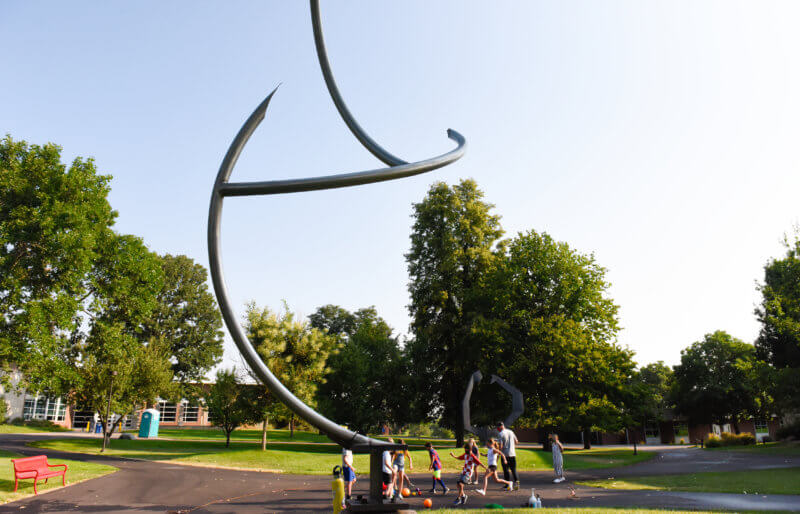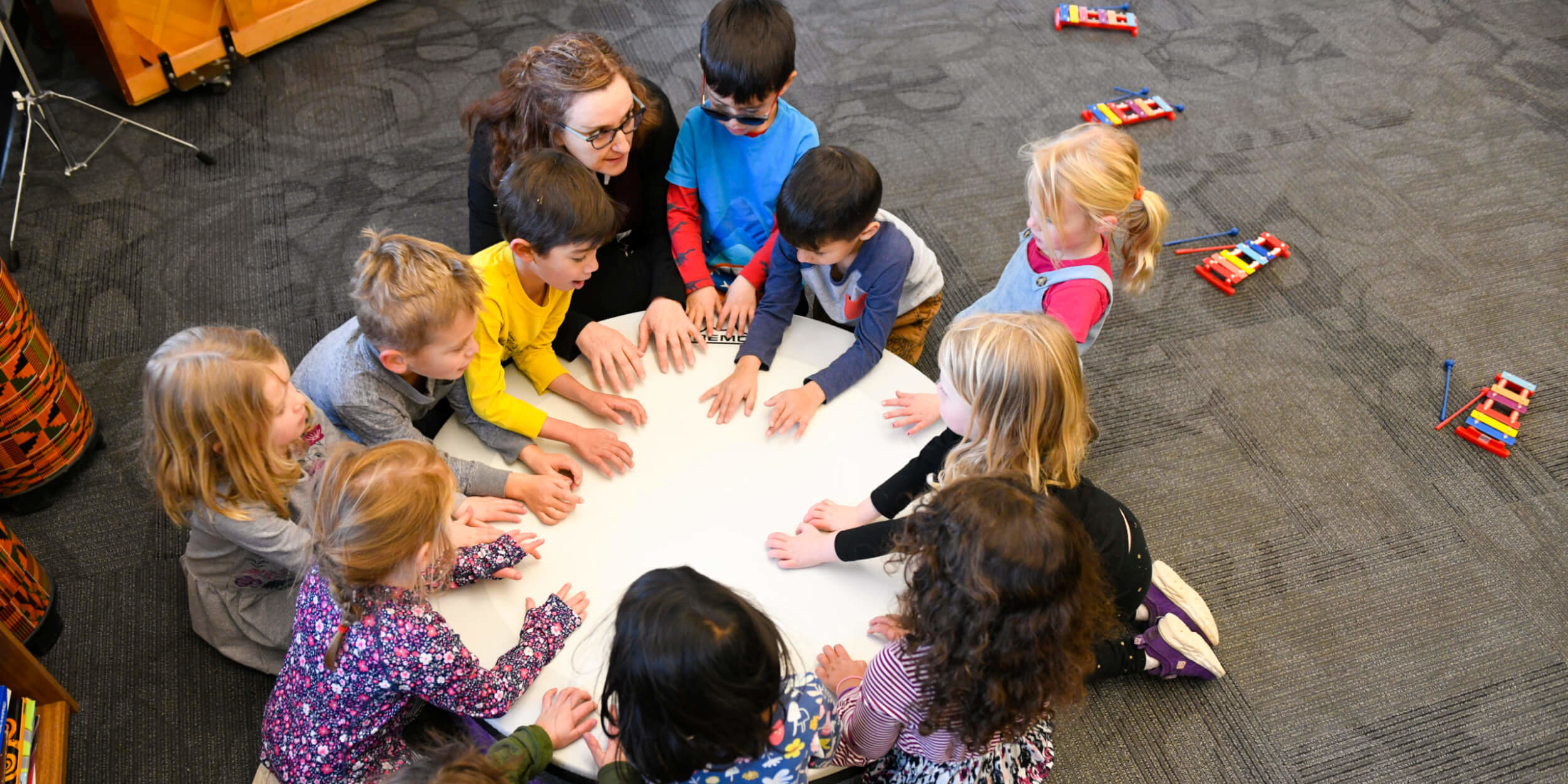Colorado Academy is part of the Association of Colorado Independent Schools (ACIS), which also serves as our accrediting body. In the worlds of independent schools and higher education, accreditation serves an important purpose of ensuring that high standards of educational quality are met and maintained. Early next week, CA will complete our final stage in a 10-year cycle of reaccreditation. A team of educators will visit campus and meet with nearly every member of our faculty and staff, as well as representative groups of parents, students, alumni, and trustees. They will review our policies and curriculum and specifically determine whether the school is living up to its mission. Prior to the pandemic, we had prepared a self-study that evaluated all aspects of our program. Collectively, the faculty and administration of CA identified our areas of strength, opportunity, and challenge. The visiting team will take that report and give us even more feedback that we will use to make improvements. This process reviews literally every aspect of CA. The visiting team will examine the curriculum in every department and in every division. Beyond the classroom, they will ensure that we have appropriate policies in place related to everything from risk management to hiring practices, educational programs and fundraising. Reaccreditation evaluates the institution as a whole and not individual performance.
I have served on the ACIS Accreditation Committee for more than a decade and have a great deal of insight into the process. After team members visit CA, they will write a report which responds to our self-study. It’s an incredible amount of work, and I am grateful for the time and effort of the 12 visiting educators who are taking time out of their already busy schedules to lend their expertise to CA. Over the next three years, CA will respond to that report, and our actions will be reviewed by the ACIS Accreditation Committee. The best part of this process is how collaborative it is. It allows an institution to identify areas of improvement and push toward those changes. Because this is a group of neutral observers with deep experience in education, they will give us some objective feedback and potentially help us identify some blind spots.
Ten years of change
COVID-19 disrupted our visiting cycle.It has been more than 10 years since our last visit. In preparation for their visit early next week, I found myself reflecting on all the changes that have happened since the last ACIS visit. Among the most noticeable—the size of our school. CA has grown by nearly 100 students since the last re-accreditation cycle. While still retaining small class sizes by adding a number of faculty and staff, we have sustained this growth and have not sacrificed the “small” school feel of CA. The value of this growth is that it allows us to add a number of programs, classes, electives, and instructional support that a smaller school could not have supported.
In the last visit, we had a far more traditional curriculum. In my first years at CA, we really focused on those 21st century skills that students need to develop. We looked deeply at our curriculum and moved from a pure content focus to merging with the Six Cs—critical thinking, creativity, collaboration, communication, character, and cultural competency. We oriented our entire Pre-K through Grade 12 program around those skills and introduced new pedagogies, such as Design Thinking, to achieve those goals. CA also got very intentional about school culture. From speaking with alumni, I know CA has always had a unique culture. When I first set foot on campus 15 years ago, I sensed something special.
Since the last ACIS visit, we have worked to identify just what distinguishes our culture and what we do to sustain it. We added work with a mindfulness expert and began to articulate the behaviors and practices that we wanted to develop in our students. What eventually emerged was our new mission statement: Creating curious, kind, courageous, and adventurous learners and leaders. It is something that every student, no matter their age, can understand and aspire to. This intentionality informs everything we do on this campus and guides our work.
Mental health and wellness care is a vital component to the support we provide for students. During the last ACIS visit, we had only two counselors for the entire school. That number has grown to four dedicated counselors. We also have expanded our support to students with learning differences by adding new faculty and staff in every division. Our counselors work hard everyday to support students and educate parents about how we need to prioritize the mental health of our students.
Campus renovation has totally transformed our school. Over the past 10 years, we have added a new Upper School building, a new visual arts building, a new athletic center, and a new performing arts center. In addition, we have renovated the historic Welborn House, expanded the storage capacity of Woody’s Pond (a key source of our irrigation) and renovated the Woody’s Pond Science Classroom. We have remodeled a number of internal spaces in the Raether Library to enhance STEM education and to promote research and scholarship. We have planted hundreds of trees and created a safer system for pick-up/drop-off and student parking. We have put new turf on Slater Field, as well as turf on the baseball field. The campus facilities rival those of many small liberal arts colleges, thanks to the generosity of so many donors.
A decade ago, we had one security officer. Now we have three full-time security officers. We have added a Welcome Center to ensure student safety and to guide visitors on campus. We have improved our policies and practices around crisis management, and we hold training for faculty and staff.
ACIS sets various standards that schools need to meet, and one is related to how schools approach work in Diversity, Equity, and Inclusion. Since the last visit, we have hired a Director of Inclusivity, and we have even expanded that office with a new hire for strategic recruitment and community engagement. Our Board of Trustees has outlined institutional goals, and every board committee has a DEI-related goal. Racial and ethnic diversity has grown amongst the faculty and staff, with 25 percent identifying as ethnically or racially diverse, and the diversity of our student body has increased to 29 percent. We have ongoing training for faculty on how to create and sustain inclusive classrooms, and we are currently examining the scope and sequence. This is work that is never finished, but significant changes have happened.
Through some key endowments and gifts, CA has sustained an excellent professional development program for faculty. Faculty can apply for grants to visit other schools or attend conferences and workshops. In addition, the administrative team has made changes in allocating professional development dollars to ensure that all faculty are on the same page in terms of an initiative or a curricular practice. We have invested in bringing resources to campus to get to know our school and help us implement these teachings.
The list of changes in the last decade could go on and on. What is so rewarding is to see the continuity we’ve maintained along the way. CA remains a place of inquiry, debate, community, kindness, and belonging. The reaccreditation process helps us always strive for excellence and reminds us to live our mission. I can’t wait for the visiting team to experience the CA we all know and appreciate. I will be sure to report what we hear after their busy week.

